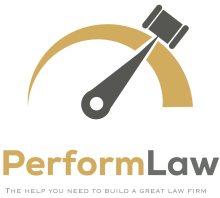|
Overview Summary: Can Transparency Bring Your Firm to the Next Level? Law firms often struggle with transparency, which can significantly impact their success. Depending on the firm's culture and strategy, transparency can range from minimal data sharing to extensive openness. Key points in this article include:
In conclusion, embracing transparency within law firms can lead to numerous benefits, including improved efficiency, fairness, and employee motivation. By carefully balancing the level of transparency and addressing potential obstacles, law firms can create a more open and productive work environment that fosters trust and collaboration among all members. |
Exploring transparency in performance metrics, compensation, and culture
More than ever, firms can collect and review their productivity and financial data. Not all managers take advantage of this freedom, and fewer still know exactly what to do once they have taken advantage. What does a manager do with all this data? Managers are frequently hesitant to allow firm employees to view the data. Some firms may allow limited visibility depending on seniority, to varying degrees of strictness, while others share nothing with their employees. Some managers may have reasons to be unwilling to share, but this unwillingness is hurting law firms. Luckily, there is a way through to the other side, and the results can be quite beneficial.
What Does Transparency Mean?
Transparency refers to the degree to which a law firm provides employees with access to information about key metrics, decision-making processes, and the criteria behind compensation and performance evaluation. Striking the right balance in transparency fosters trust, aligns individual efforts with firm objectives, and promotes accountability while mitigating potential conflicts and feelings of inequity. Naturally, a healthy degree of transparency may depend on the firm’s needs. It exists on a spectrum, ranging from full visibility into salaries and productivity metrics to complete opacity, where such information is entirely withheld. Below is a closer look at the opposite extremes.
Radical Transparency
At one end of the spectrum, transparency can include acts as drastic as posting salaries. This might reveal significant disparities, leading to feelings of unfairness or resentment among employees. For example, junior attorneys might feel demoralized if they discover that peers with similar workloads earn more, or senior attorneys might feel undervalued compared to others with less experience.
Radical Opacity
On the other end of the spectrum, where there is no transparency (call it "opacity"), attorneys are in the dark. They cannot even see their own productivity metrics. Who knows if an attorney is profitable to the firm or not? Without visibility into their performance metrics, attorneys may struggle to identify areas for improvement. This lack of feedback can stunt their growth and prevent them from taking steps to enhance their value to the firm.
Here is one example: We suspect that James is underperforming while his paralegal Richard does all the work. Unfortunately, we have no concrete figures to back that up because everything gets billed under Michael anyway.
The Middle Road
Both of the above situations may not be ideal. We suggest a path somewhere in the middle, using the Example Transparency Hierarchy outlined below.
An Example Framework for Transparency
The structure below provides a scenario where law firm financial and productivity data is accessible to firm employees based on the firm’s existing hierarchy. In this scenario, more senior positions can view all items listed within their own level and all the items in lower levels. This structure is just one suggestion, and alternatives may suit some firms better.
Data Sources
The data may be shared through various sources. Some of them may be available “on tap” through firm matter management/timekeeping software, if applicable. Other metrics may be available through bookkeeping software, such as QuickBooks. In either case, visibility will depend on which employees have an active account with the specific application(s). For some firms, systematic access to data (such as documents from a CPA) may be more “manual” and may rely on managers to periodically disseminate information in emails or firm meetings.
A Gradual Approach
For firms that don’t already share (or even have) most or all of the information described in this scenario, keep in mind that the following hierarchy is a suggestion for a goal, not a behest for immediate action. A firm might choose to work toward the following data transparency framework gradually over a period of time, like six months or a year.
Example Transparency Hierarchy
.png?width=3638&height=5840&name=Transparency%20Venn%20Diagram%20(with%20transparent%20background).png)
What about personal profitability?
How should personal profitability be handled? Determining who can access profitability metrics is a contentious issue, which is why it remains under the "Firm Owners" category. If attorneys are aware of their personal profitability, they might request a share of the profits. Meanwhile, firm owners assume significant risk by taking on the firm’s liabilities and rightfully expect fair compensation in return.
However, the amount of profit that a firm's owners should keep is not entirely objective. This is where a clearly defined compensation formula can be of great use. It can explain how profits are allocated. A firm that communicates its policies plainly may then feel comfortable sharing personal profitability information to timekeepers.
Obstacles to Transparency
As we began to discuss above, many managers are reluctant to provide employees with access to the metrics listed above. The obstacles depend entirely on which metrics are in question: obviously, employee scrutiny of income statements will not be an issue if income statements are not shared.
With that in mind, obstacles may include the following examples.
|
Example Obstacles
|
One takeaway from this is that fairly and carefully managed firms will face fewer obstacles to transparency. Managers in these firms will likely find it easier to justify their past decisions if questioned.
|
But for firms that don't quite measure up yet, how can they get there? And why should they make the effort in the first place? |
The Case for Transparency
-
Free Will
Clearly communicate expectations and provide the live data that shows how those expectations are met. When this happens, results are obviously in the attorney's control. Each attorney can determine their own outcomes.
Example: Klaus is expected to reach 150 billable hours each month. By mid-month, Klaus checks his totals in the timekeeping system and sees that he has only worked 60 billable hours. Now Klaus knows he must work another 90 billable hours to qualify for his bonus. He manages to work an additional 95, and both he and his manager are pleased. -
No Surprises
Consequences for subpar performance will not be surprising; on the contrary, they will occur as an automatic, natural outcome. An attorney who is consistently aware of her performance is not likely to have hard feelings against management or blame anyone but herself for failing to meet the production requirements for a bonus. In fact, a manager may not have to be involved if accounting/payroll admins are directly plugged into attorney stats and knowledgeable of the firm's (consistent, clear) compensation policy.Example: The next month, Klaus did not perform as expected. He emailed his manager, acknowledging that he did not reach 150 hours (about 13 days). He proposed his plan to make up for the missing hours in the following month so that he would be on track for the year-end bonus.
"It Manages Itself!"
Managers who use information software that provides transparency on performance metrics may find that many of their managerial duties become far more efficient.
Efficient Meetings
Regular staff meetings (such as a quarterly review) are well-informed and can get to the point sooner, saving everyone time.
| Example: “Now that everyone has a copy of the firm’s performance for Q2, let’s zoom in on AR broken down by the client. |
. Easier Performance Reviews
One-on-one performance reviews have the advantage of a reliable list of metrics to consider, making the meeting agenda almost self-evident.
| Example: “I’ve printed your Q1 hours and fees broken down by matter so we can review your productivity and then collaborate on any client-specific or internal procedural issues that come to mind.” |
. Clarity to Attract New Hires
Performance (quantitative and qualitative) is related to salaries and bonuses, allowing managers to use existing (anonymized) employee data as examples of what a new hire can expect when attracting new hire.
| Example: “If you come to our firm and bill 2000 hours (about 2 and a half months), we can offer you $160,000 plus a 20% profit bonus. |
. Clarity for Strategy
Clear performance results can demonstrate what strategies work, and which ones do not, such as how a firm chooses to staff a client (i.e., what blend of attorneys and paralegals to use when servicing a client's files), helping timekeepers, department leaders, and firm owners find solutions faster.
| Example: If accounting staff share client’s time-cut data (with attorneys, this can equip attorneys with the knowledge necessary to improve their billing practices and increase their personal collections. This benefits every level of employee. |
Higher-Quality Collaboration
Employees who have more visibility for firm success (or failure) can develop more informed creative solutions to big-picture issues and can provide those solutions to managers. In other words, owners will benefit from a wider pool of brain power to support the firm's success. This empowers middle managers and eases the burden on firm owners.
| Example: “I reviewed my team’s profitability over the last 12 months and realized that Wilma is so profitable that she is due for a raise. I offered her a raise that still leaves $80,000 in profit for the firm, and Wilma confided that she has stopped looking for other work. Now Wilma is training the new associate.” |
. Confidence in Management
Managers who promote transparency send a message of trust and goodwill to their entire firm. Managers who give their attorneys the freedom to be better informed say, "You deserve to know more. I want to give you more control over your outcomes." (Also, it could be a clever idea to communicate as much when taking firmwide steps toward transparency, to make sure that message is clear.)
Managers benefit from more informed employees because those employees can now see that what they do matters to the firm. They will simultaneously be more empowered and motivated than ever to act toward the firm's greater good.
How to Change?
The wise reader may not be convinced yet. After all, we now have the motive, not the opportunity. The wise reader may say, “All this transparency business sounds good, but I’m not convinced that it’s feasible.” We propose a “wedge” of gradual changes that ultimately “lift the boulder” of improved firm policy.
Below are a few possible starting points.
-
Fair Design
Develop equitably designed compensation policies from the beginning. In cases where the firm can start fresh, such as with a startup, or a substantial change in staffing like high turnover or a merger, aim for an equitable, consistent compensation policy based solely on clear metrics such as fees or profit and quality points (See our video: What's the best bonus model for improving productivity and morale?)
-
Fair Development
Law firms will naturally ask at this point, "How can we foster this culture of fairness and transparency if salaries are already unequal?"
- Equitable Offers. When making offers to prospective attorneys and staff, aim for salary equity, using existing employee compensation as your reference.
- If you find that the job market demands compensation that is much higher than what you pay existing employees, this is a sign that it is time to consider granting raises.
-
- Opportunity for Setting Precedent. If this happens to you, it could also be a good moment to develop the equitable compensation policy your firm may need, if one does not already exist, because it allows you to immediately fulfill the terms of the policy via the new raises. This in turn sets a precedent for future compensation decisions.
- Ways to Afford Raises. If you find that your firm cannot afford the necessary raises, there are still steps you can take, such as fee increases and improved billing standards, but these issues fall outside the scope of this article. (Naturally, we would suggest that our free knowledge base can provide you with the tools you need to overcome these concerns.)
-
- If you find that the job market demands compensation that is much higher than what you pay existing employees, this is a sign that it is time to consider granting raises.
- When determining raises, consider what amounts would be necessary to level the playing field.
- Equitable Offers. When making offers to prospective attorneys and staff, aim for salary equity, using existing employee compensation as your reference.
-
Publish
When able, publish salary and raise tables and/or compensation policies/ formulae, either internally (this is best) or even on the firm's website (this is more radical, but it has its benefits, such as attracting new hires).
- Mission for equal opportunities. A mission statement that includes the firm's dedication to equal treatment based on productivity and quality of billable and non-billable work can attract new hires. People typically desire outcomes that are reasonably and straightforwardly related to their performance (quantity and quality). Show them what to expect: "If I do X, I receive Y." Removing uncertainty eases minds and motivates people.
Conclusion
Implementing the suggestions outlined above is undoubtedly challenging, but the potential rewards make the effort worthwhile. Benefits like more effective meetings, motivated junior attorneys, streamlined decision-making, enhanced strategic planning, increased collaboration, and improved recruitment will become clear over time. Any firm willing to address these transparency challenges can unlock these advantages and more. While the process requires patience, even a year of intentional, gradual progress can lay a strong foundation for long-term success and prosperity.




 />i
/>i

